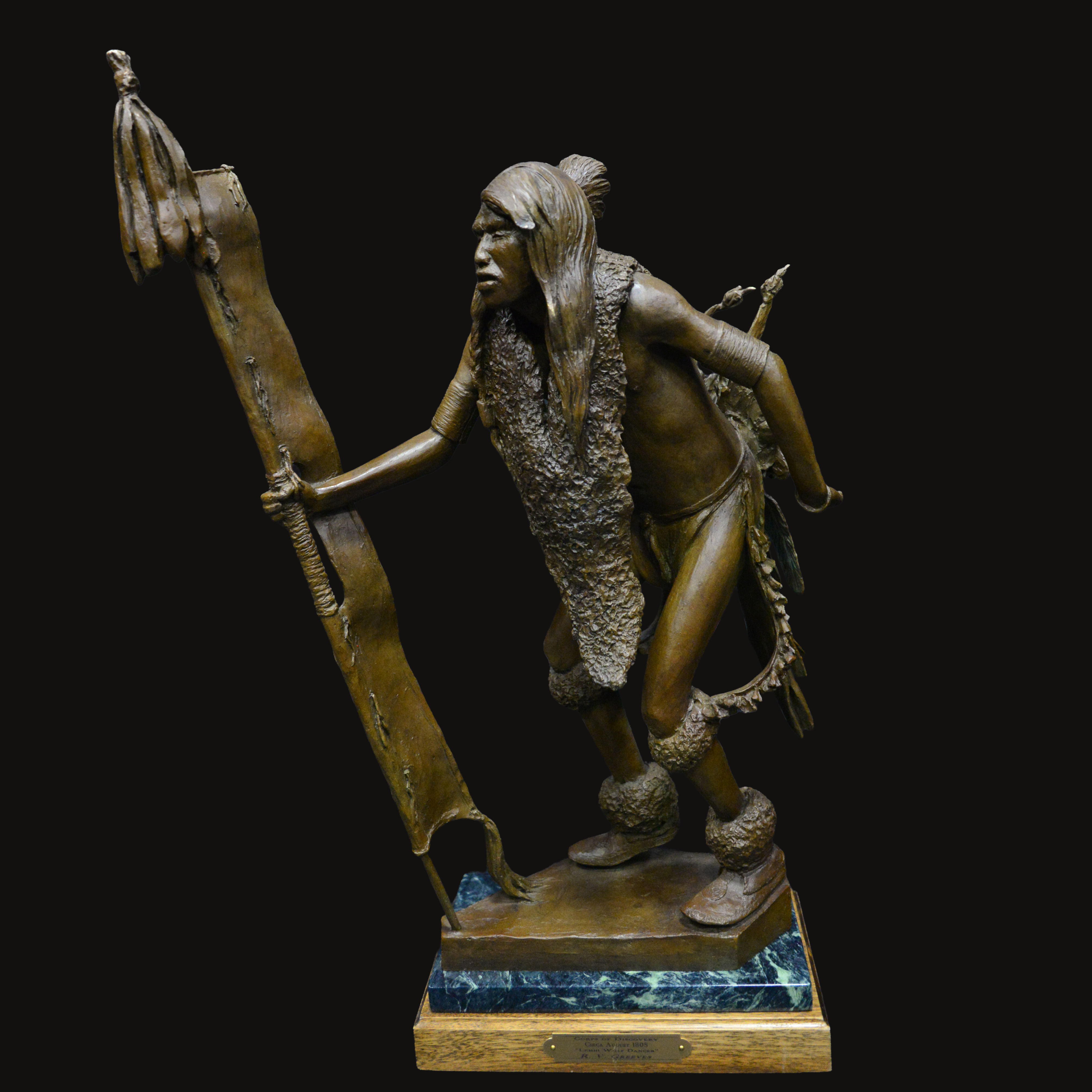Half-man, half-myth—he moves like memory in the skin of the wolf.
Richard Vernon Greeves
Contemporary

“Lemhi Wolf Dancer – Circa August 1805” by Richard Vernon Greeves captures a moment suspended between ceremony and survival. The bronze figure—lean, alert, and fully immersed in ritual—holds a long ceremonial staff as he crouches mid-step, adorned in a wolf pelt and wrapped in traditional hide and fur. Every line of tension in his limbs, every angle of motion in his posture, suggests the raw presence of transformation: from hunter to spirit, from man to myth.
The Lemhi Shoshone, whose lands the Lewis and Clark expedition crossed in the summer of 1805, revered the wolf as a sacred figure of guidance, strategy, and spiritual power. Greeves doesn’t just sculpt a dancer—he conjures the moment when identity blurs into archetype.
The piece is both kinetic and grounded: one foot mid-stride, one arm braced against his banner, his face turned sharply toward something unseen—be it the next movement, the next world, or the memory of what’s already been lost.
A profound work for collectors and curators interested in Indigenous ritual, performance as preservation, and bronze sculpture that bridges the visceral and the spiritual.